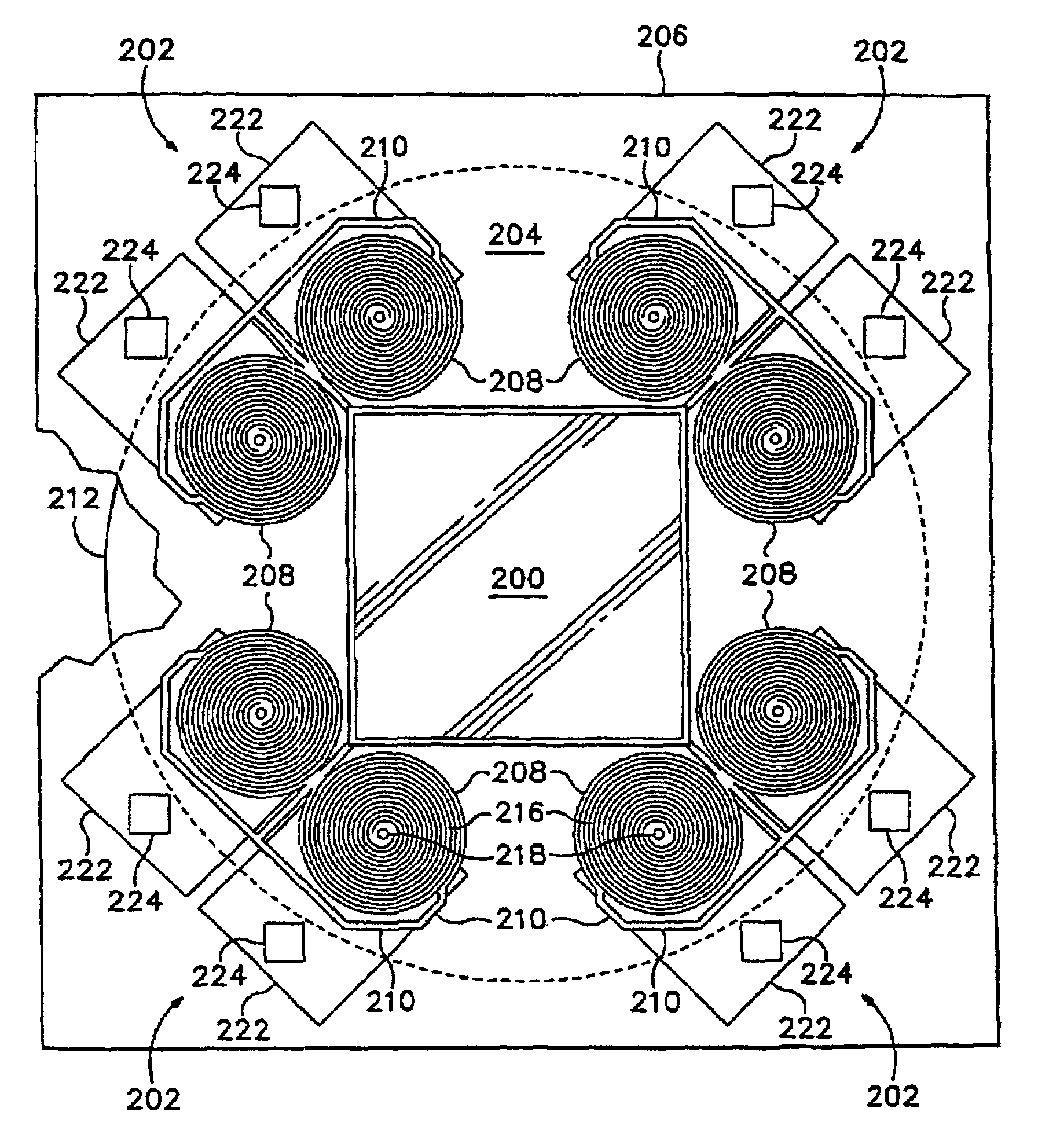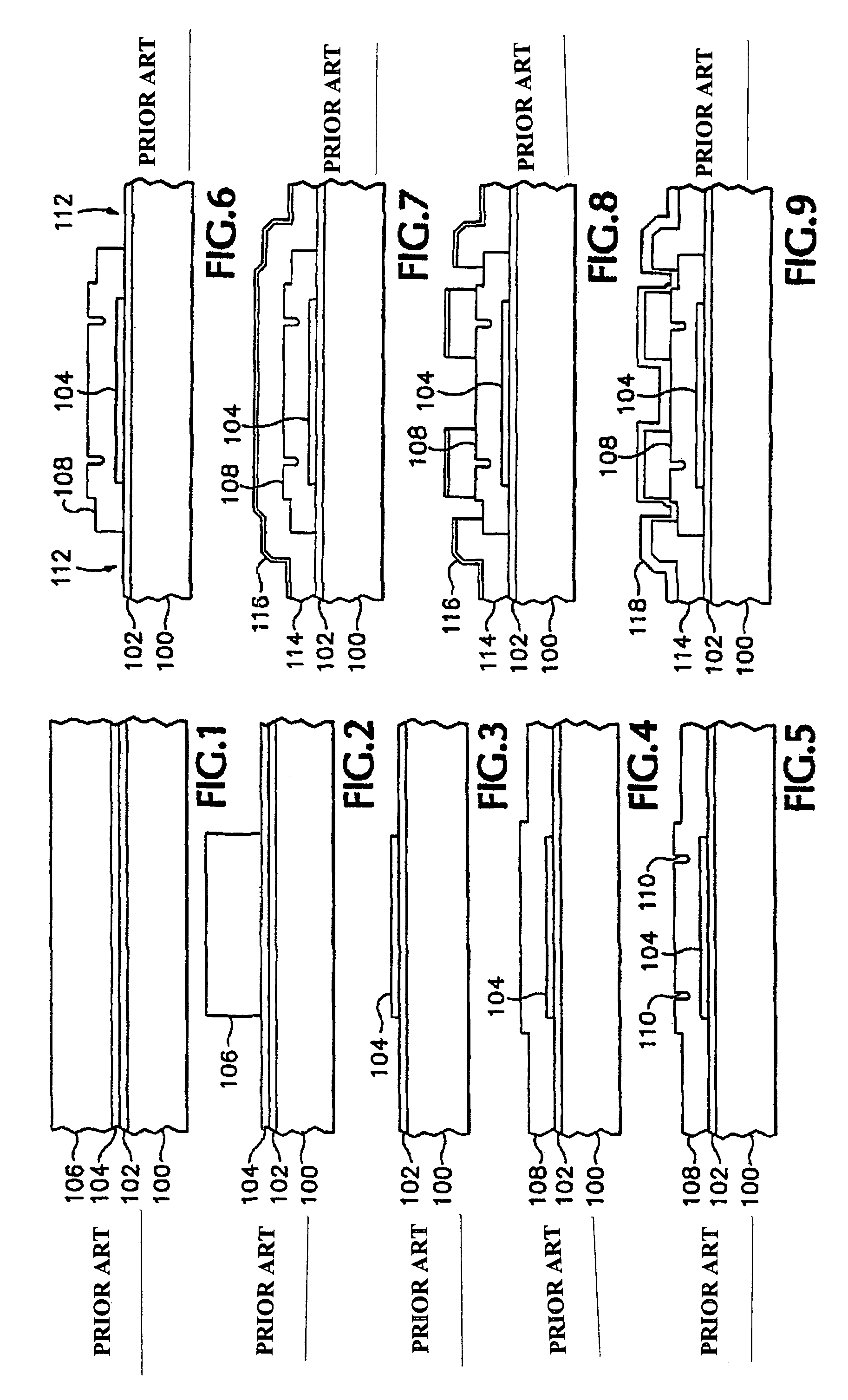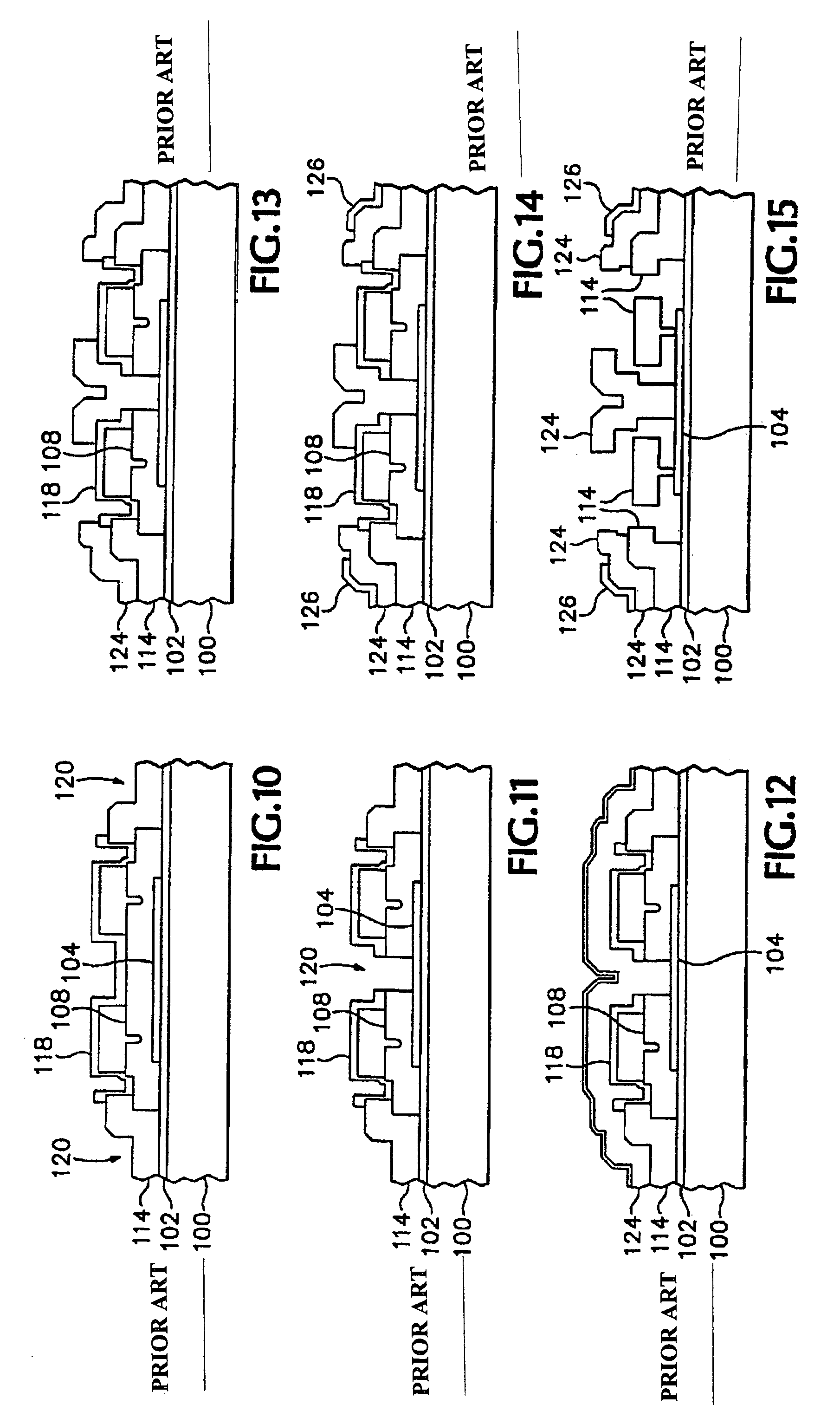Magnetically actuated microelectrochemical systems actuator
a microelectrochemical and actuator technology, applied in the direction of snap-action arrangement, magnetism bodies, instruments, etc., can solve the problems of physical connection and electrically conductive layers, and achieve the effects of reducing the number of coils, and preventing cross-talk and excessive and possibly damaging curren
- Summary
- Abstract
- Description
- Claims
- Application Information
AI Technical Summary
Benefits of technology
Problems solved by technology
Method used
Image
Examples
Embodiment Construction
[0040]A preferred embodiment of the present invention is described below with reference to the accompanying FIGS. 16–20. The present invention provides an electrically controlled actuator. While the present actuator is shown controlling a mirror surface—a common application of microelectrical mechanical actuators—the actuator may be used to control other physical structures, such as lenses, valves, and switches.
[0041]In the present invention, a repulsive magnetic force is used to elevate and control an orientation of the mirror, or other object. In a first preferred embodiment, electrical input is provided to expandable, semiconductor coils to create a variable magnetic field. A permanent magnet located near the semiconductor coils provides an opposing fixed magnetic force that causes the semiconductor coils to expand in a predictable and controllable manner. This coil expansion provides mechanical motion that can move an object such as the exemplary mirror. The electrical input may...
PUM
| Property | Measurement | Unit |
|---|---|---|
| depth | aaaaa | aaaaa |
| thickness | aaaaa | aaaaa |
| thick | aaaaa | aaaaa |
Abstract
Description
Claims
Application Information
 Login to View More
Login to View More - R&D
- Intellectual Property
- Life Sciences
- Materials
- Tech Scout
- Unparalleled Data Quality
- Higher Quality Content
- 60% Fewer Hallucinations
Browse by: Latest US Patents, China's latest patents, Technical Efficacy Thesaurus, Application Domain, Technology Topic, Popular Technical Reports.
© 2025 PatSnap. All rights reserved.Legal|Privacy policy|Modern Slavery Act Transparency Statement|Sitemap|About US| Contact US: help@patsnap.com



